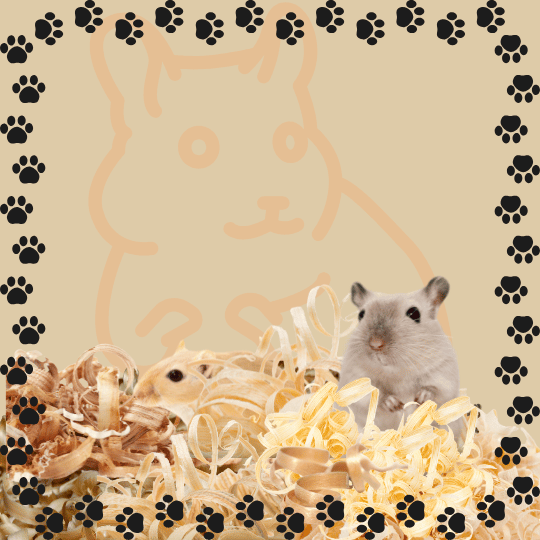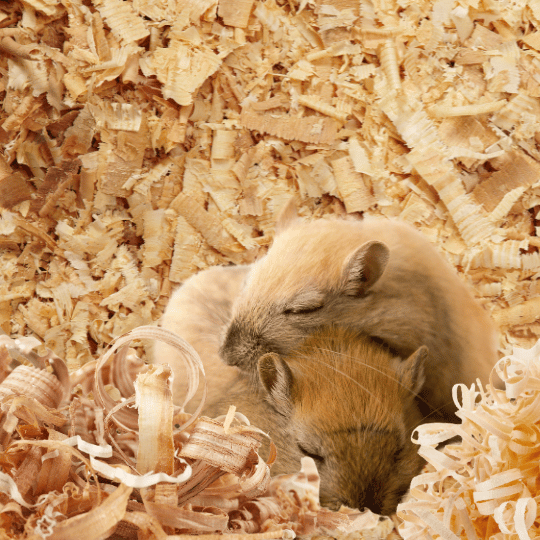
Have you ever thought about adding gerbils as pets to your home?
Oh, btw, what are gerbils? And what makes gerbils a better option than your typical rat, mouse, hamster, or guinea pig as a first rodent pet?
Gerbils, scientifically known as Meriones unguiculatus, are small rodents that are native to desert regions of Asia, particularly in parts of Mongolia and Northern China. And Russia. I keep forgetting Russia.
These fascinating creatures are well-adapted to survive in harsh, arid environments with extreme temperatures, often found in sand dunes, semi-deserts, and steppes.
This natural habitat plays a significant role in how they behave and how they need to be cared for in a home environment.
Although wild gerbils were initially studied for their behavior, reproduction, and immune system, they quickly became popular as pets due to their friendly and social nature.
Since then, they have spread across the world, becoming beloved first pets for children and small animal enthusiasts alike because of those qualities. And add the fact that they’re very low-maintenance? Well, you have the makings of a perfect first pet.
And somehow, these days, these tiny, energetic rodents are also making their way into Filipino homes. And if you’re new to the pet world or looking for a small animal companion, a gerbil could be exactly what you’re looking for!
Why Choose Gerbils as Pets?
Gerbils may not be the first animals that comes to mind, when you think of pets.
But they should be!

Gerbils as pets are an excellent choice for first-time pet owners. They are gentle, clean, and easy to manage—perfect for anyone looking to introduce a pet into their home without the intense commitment that larger animals like dogs or cats require.
And unlike mice or rats, gerbils have a reputation for being less smelly, making them a great choice for apartment living or for families who want a pet but are concerned about unpleasant odors.
Plus, their small size makes them suitable for various living spaces, from tight condos to small houses.
My Son’s Growing Interest in Owning a Pet
One of the reasons I started exploring gerbils as pets in the Philippines was because of my son.
Recently, he’s shown a lot of interest in having a pet, and I believe a gerbil is a great starter pet for him.
Why?
I’ve never owned one but I learned about gerbils when I was very young. I had just gotten into caring for mice as pets and I was given a pet care book that talked about rats, mice, hamsters, guinea pigs, and gerbils.
Now I’d seen the first four several times in pet shops but never gerbils. And I searched high and low for them but never got a chance to see them until I recently saw a pair for sale in a pet store here in Davao City.
Unlike pets for children that require constant attention or frequent cleaning (like hamsters or guinea pigs), gerbils are independent and easy to care for. They don’t need to be walked or constantly monitored, which is perfect for busy parents like me.
They are also fun to watch the way they dig around and interact with each other in their little burrows is downright entertaining.
I spent a solid hour just watching them in their cage before I realized I had other responsibilities to attend to. I didn’t buy them then because my hands were full taking care of dogs and cats.
Plus, my wife was about to give birth to our firstborn.
Taking on a new pet just wasn’t a good idea then.
Now that my son is 4, getting a gerbil seems like a good idea. I guess better than getting him a ball python or turtle because those are more for me than for him 🙂
Understanding Gerbil Care: A Simple Guide
Housing Your Gerbils
1. Choosing the Right Cage
The most important aspect of housing your gerbil is providing them with a spacious and secure home. While many pet stores offer small cages designed for rodents, I recommend opting for a larger glass aquarium or a wire cage with a solid base.
Why glass?
Gerbils are fantastic diggers, and glass aquariums provide them with the opportunity to burrow without the risk of bedding falling out. The aquarium should have a secure mesh lid to prevent your gerbil from escaping, as they’re surprisingly skilled escape artists!
If you choose a wire cage, ensure the bars are spaced closely together—around 0.5 inches apart—to prevent your gerbil from squeezing through. Also, make sure the floor is solid and smooth, not a wire mesh, which can be harmful to their feet.
2. Bedding and Substrate
Gerbils love to burrow and dig, which is why providing the right bedding is crucial.
Avoid using cedar or pine shavings because they can release harmful oils that may affect your gerbil’s respiratory system.
Instead, opt for aspen wood shavings or paper-based bedding, which are safe and absorbent. You can also use sand as part of their bedding to mimic their natural habitat—remember: gerbils are native to dry, sandy environments, and they love rolling around in it!
The key to bedding is depth—gerbils love to dig, so aim for at least 3-4 inches of bedding. This allows them to create tunnels and explore their natural instincts. Just make sure to change the bedding regularly to keep their cage clean and fresh.
3. Habitat Enrichment: Toys and Exercise
Gerbils are active, playful animals that need stimulation. Without enrichment, they can get bored, leading to destructive behavior or even stress. Providing items like chew toys, cardboard tubes, and wooden climbing structures will help keep your gerbil entertained.
These items not only allow your gerbil to explore but also keep their teeth healthy because chewing is a natural behavior for gerbils, and it’s essential to provide them with safe objects to gnaw on.
Additionally, since gerbils are nocturnal creatures, they’re most active at night. A small, silent exercise wheel is ideal, and it’s important to choose a solid plastic wheel (instead of wire) to prevent injury to their feet.
4. Temperature and Lighting
Gerbils prefer temperatures between 65°F and 75°F (around 18°C to 24°C). They are sensitive to extreme temperatures, so it’s essential to keep them in a room that isn’t too hot or too cold.
Avoid placing their cage in direct sunlight or near drafts, as this can cause stress.
As nocturnal animals, gerbils are also not dependent on light cycles, but they do benefit from darkness at night—this helps regulate their natural activity levels.
5. Privacy and Safety
While gerbils enjoy interacting with their environment, they are also cautious animals that need places to retreat to for privacy and safety.
A nesting box or tunnel system will help your gerbil feel secure when they want to relax or sleep. Ensure that their habitat includes plenty of places for them to hide and feel safe.
You can also supply them with a dried out coconut shell as a hide box.
Feeding Your Gerbil
Gerbils are omnivores, meaning they eat both plants and insects.
In the wild, they would typically forage for seeds, grains, and small insects.
In your care, you should feed them a balanced diet that doesn’t stray far from their natural diet or high-quality commercial gerbil food.
You can supplement their diet with fresh fruits and vegetables—just make sure to avoid sugary foods that can cause health issues down the road.
Also, make sure they always have fresh water available in a water bottle with a metal spout. Gerbils are very clean and will use the water bottle easily if it’s properly set up.
1. Gerbil Food Mix
These mixes are designed to meet all of their nutritional needs, with seeds, grains, and sometimes dried fruits and vegetables. Gerbils are naturally foragers, so they enjoy picking through and nibbling on different types of food in their mix.
You should look for high-quality gerbil food that is high in fiber and low in sugar and fat. Gerbils, like any rodents, have fast metabolisms, so they need a steady supply of food.
You can supplement their commercial mix with other healthy foods, but always avoid high-sugar snacks that can lead to obesity and other health issues.
2. Fresh Fruits and Vegetables
In addition to their main food mix, you can offer your gerbil a small amount of fresh fruits and vegetables.
Emphasis on small.
Some favorites include carrots, apples, lettuce, cucumber, and broccoli. However, always remove any leftover produce after a few hours to avoid spoilage and keep their habitat clean.
It’s important to note that fruits should be offered sparingly, as they are high in sugar and can cause digestive issues. Stick to small portions of fruit once or twice a week. Vegetables, on the other hand, can be given more frequently, but always in moderation.
3. Seeds and Nuts
Occasionally, you can give your gerbil seeds or unsalted nuts like sunflower seeds or pumpkin seeds.
These should be considered treats rather than regular meals, as they are high in fat and can contribute to obesity if given too often. A couple of sunflower seeds every few days is more than enough!
4. Protein-Rich Foods
While gerbils are primarily herbivores, they do need small amounts of protein in their diet. You can provide them with small pieces of boiled egg, mealworms, or even crickets to help meet their protein needs.
Again, keep this to a minimum—protein should only make up a small portion of their diet.
5. Water
Always ensure that your gerbil has access to fresh water. Water bottles with a metal spout are ideal for gerbils, as they are clean and easy for the animals to drink from.
Be sure to check the water bottle regularly to make sure it’s functioning properly and always refill it when necessary.
6. What to Avoid
Avoid feeding your gerbil foods like chocolate, onions, garlic, or citrus fruits, which can be toxic to them. Also, don’t give them dairy products like milk or cheese, as gerbils cannot digest lactose properly.
Common Health Issues for Gerbils and What to Do About Them
Just like any pet, gerbils can encounter health problems. One common issue is overgrown teeth, which can result from malnutrition or injury. If you notice your gerbil having trouble eating or showing signs of discomfort, it might be time to visit the vet.
Another issue to keep an eye on is seizures. Around 10-20% of gerbils suffer from spontaneous epileptic seizures, often triggered by stress.
While this can be distressing, don’t worry—most gerbils recover quickly from a seizure, and the condition typically doesn’t cause long-term harm. I recommend handling your gerbil gently and avoiding sudden movements that could trigger seizures.
1. Respiratory Problems
Gerbils are particularly sensitive to poor air quality, especially dust and chemicals in their bedding. A common health issue is respiratory distress, which may manifest in symptoms like sneezing, wheezing, labored breathing, or discharge from the nose or eyes.
So, for starters, keep their cage clean and provide proper ventilation. If the condition persists, check their bedding or call your local veterinarian.
2. Wet Tail (Diarrhea)
Wet tail, or diarrhea, is another common issue, often caused by stress, poor diet, or a sudden change in environment. It can quickly lead to dehydration and lethargy, so it’s important to address it immediately.
If diarrhea persists for more than a day or if your gerbil seems lethargic, consult a veterinarian. They may need medication to treat the condition.
3. Overgrown Teeth
Gerbils, like all rodents, have ever-growing teeth. If they don’t have enough appropriate things to chew on, such as wood or chew toys, their teeth can become overgrown, which can lead to difficulty eating, drooling, and even infections.

So provide blocks of wood that they can use as chew toys and monitor their teeth. Your last recourse is to go to your vet to help correct dental issues.
4. Skin Problems and Fur Loss
If your gerbil is losing fur or has skin lesions, this could be caused by mites, lice, or bacterial infections. Skin issues are often a sign of stress, poor diet, or a dirty living environment.
The first thing to do is check for mites or lice. Next is to clean their enclosure and provide a small dust bath for them so they can groom themselves. Lastly, visit your vet and see if they have a solution for you.
5. Tumors and Lumps
As gerbils age, they can develop tumors or lumps. These are often benign, but they can sometimes become problematic if they grow large or cause discomfort.
This is why regular visits to the veterinarian and check-ups are important, especially as your gerbil ages. A vet can perform diagnostic tests, including X-rays or biopsies, to determine if the lump is benign or cancerous.
6. Obesity and Poor Diet
Obesity is a serious issue for gerbils, especially if they are overfed treats or have too little exercise. An overweight gerbil is at risk for several health issues, including diabetes, heart disease, and liver problems.
Make sure that you only provide them with enough healthy food and exercise. Needless to say, avoid providing them with snack items.
Always remember that when in doubt, it’s always best to consult with a veterinarian who has experience with rodents. Keeping your gerbil healthy and happy is the first priority and it may be costly but totally worth it.
Well, that’s all I can think of about gerbils as pets.
Oh, did I mention that gerbils are social animals?

They thrive when kept in pairs or small groups, especially if they’ve been raised together. Gerbils are generally friendly and playful, though they can become territorial if they feel threatened.
If you’re a first-time pet owner or considering gerbils as pets for children, you’ll be pleased to know they’re incredibly low-maintenance.
Unlike dogs that need constant attention or cats that demand space and privacy, gerbils are independent and enjoy their own company. They are relatively easy to care for and won’t break the bank in terms of supplies or vet visits.
But, like any pet, they require proper care, attention, and love.
With the right environment, a balanced diet, and plenty of love, your new gerbil can live up to 4 years and become a cherished member of your family!
Do you own a gerbil? Or are you planning on getting one? Send me an email so we can form our own mini gerbil group!


